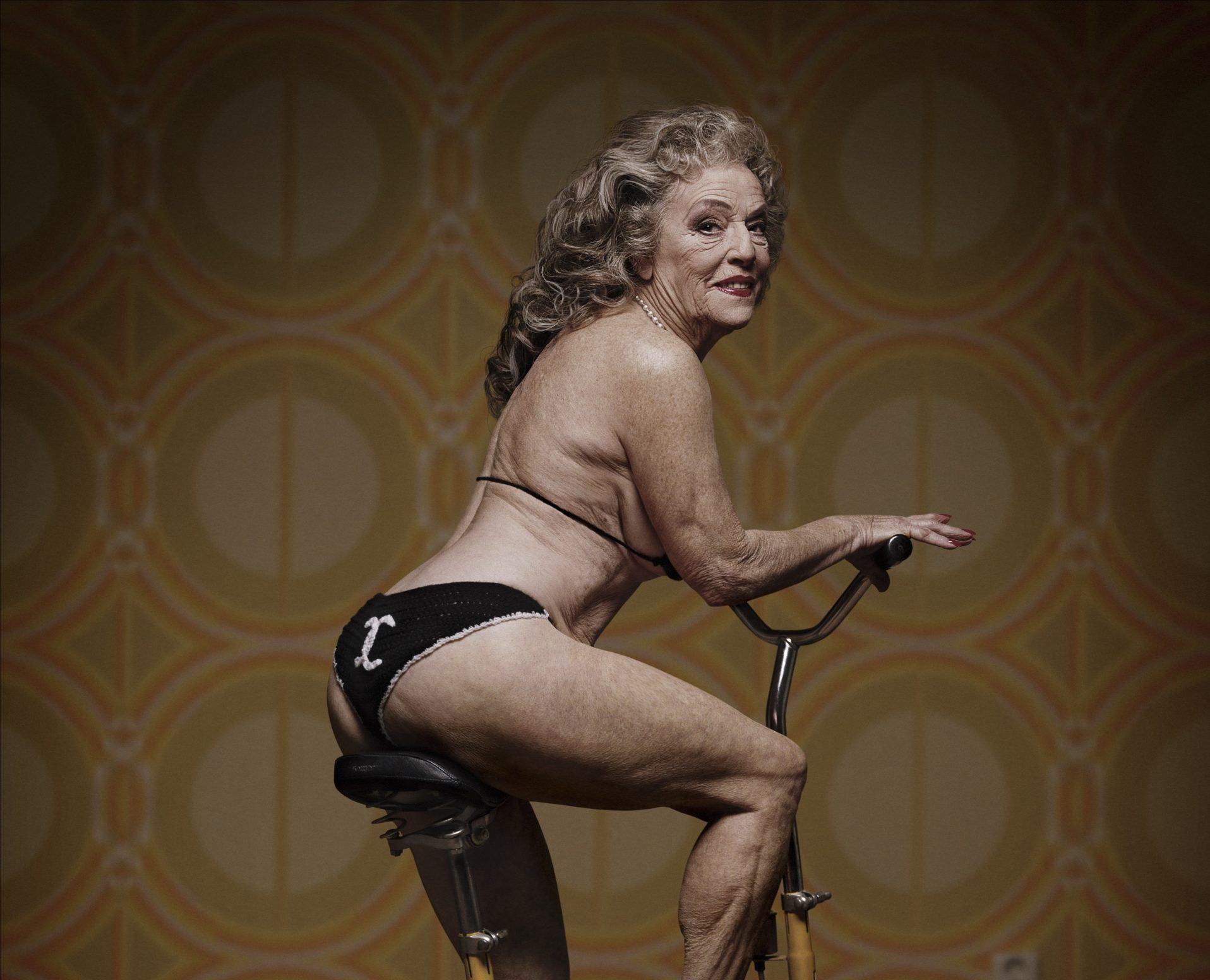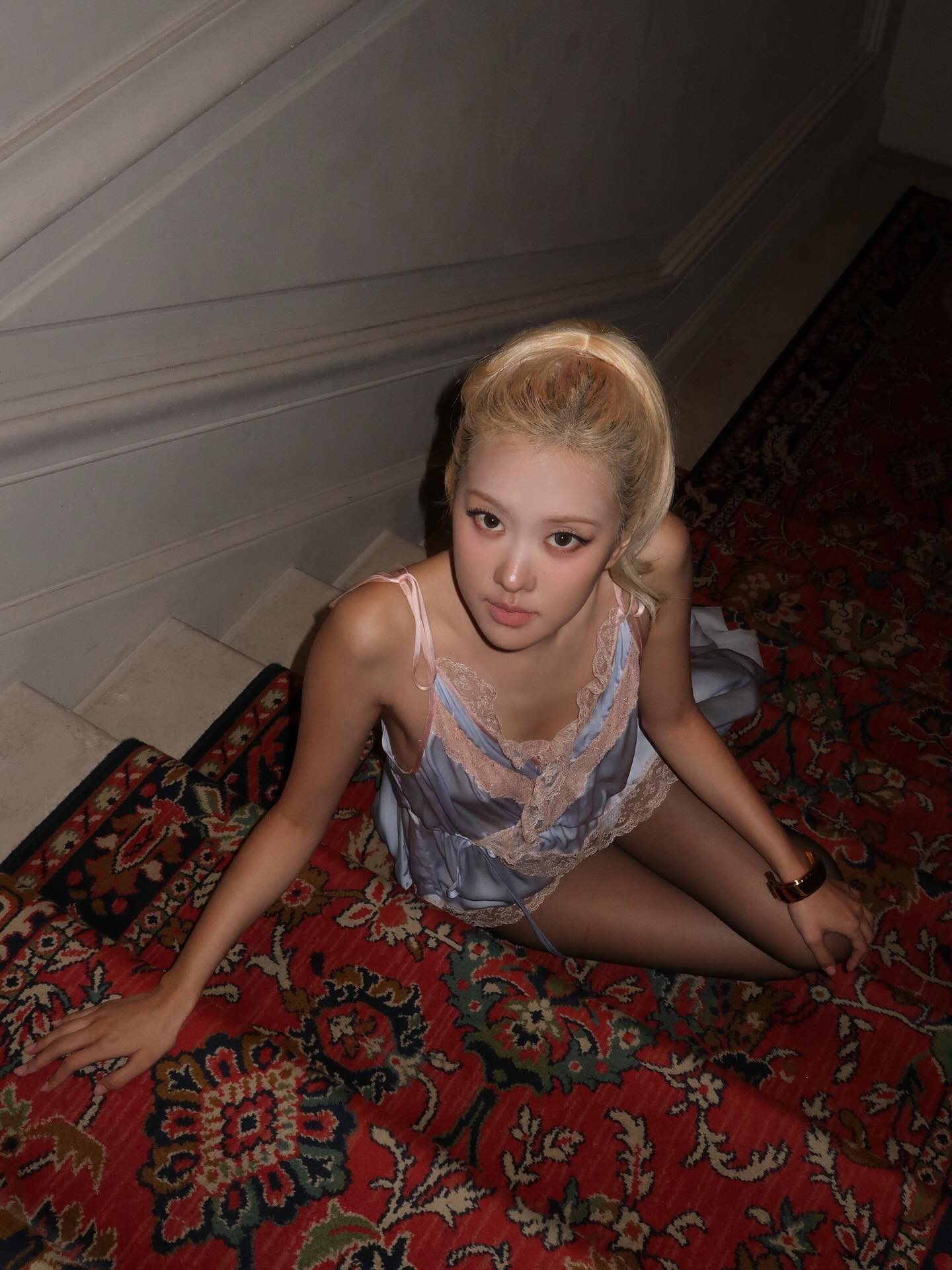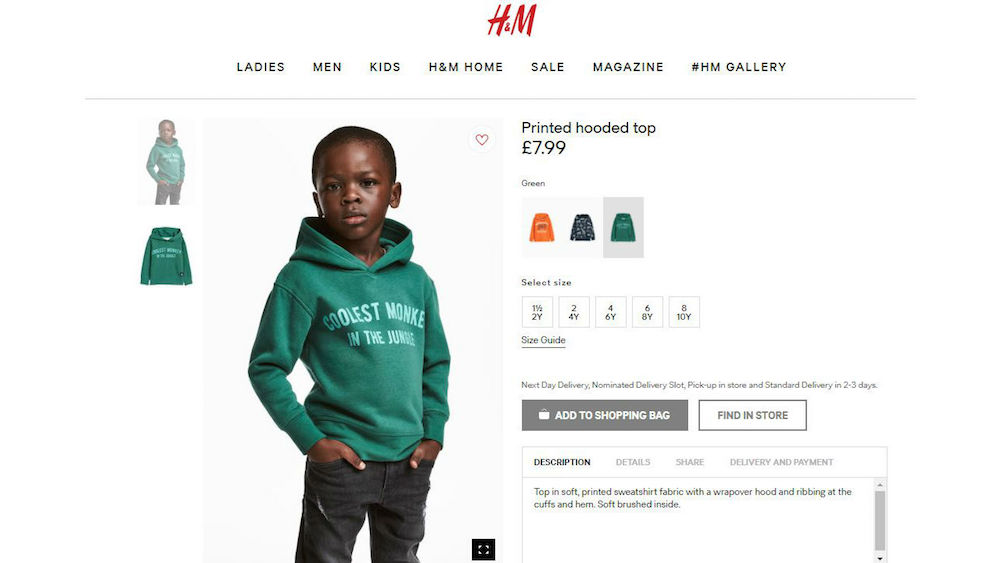
H&M just appointed a diversity leader after having been accused of racism for an ad featuring a black kid wearing a hoodie that reads “coolest monkey in the jungle.” On Tuesday, the Swedish colossus announced on its Facebook page that the decision to create such a position was driven by its “commitment to addressing diversity and inclusiveness […] to drive our work forward.”
This comes after the high-street fashion tycoon publicly apologised for the incident calling it “unintentional”, removing the picture from every online platform and suspended the distribution of the hoodie.
The parents of the young boy who was pictured in the ad decided to speak out about the incident on British broadcaster ITV as their kid was at the very centre of the storm. During the interview, the boy’s mother, Terry Mango, said that she did not see the ad as racist but added that “It is not an overreaction when it comes to racism, everybody should act differently based on their own opinions on what racism is.”
But as the word monkey is historically associated with racial slurs, the image offended many consumers, who took to social media to express their outrage and disappointment. In South Africa, the backlash against the brand even resulted in protesters storming H&M stores in the country’s major cities.
Rapper Diddy and NBA superstar LeBron James were among the celebrities who publicly expressed their disgrace, while producer G-Eazy and Canadian singer The Weekend immediately cancelled their partnerships with the brand.
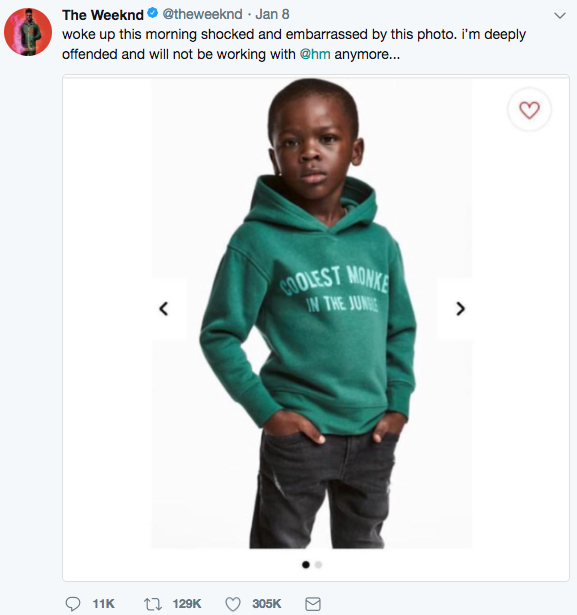
Despite the brand’s apologies and removal of the ad, this has been a heavy blow to their PR. The H&M “monkey storm” has reopened a long-standing controversy on fashion, beauty and personal care ads that have been deemed offensive and racist, with many critics and consumers constantly questioning the inclusivity of these industries and the mindset of those who control them.
These kind of controversies, for many observers and activists, also put into perfective the issue of fair representation in the workplace. As Daniella Scrugs argued in her recent opinion piece on The Undefeated, it’s not that the people offended by the ad think that everyone who works at H&M is a racist but it “is that there probably aren’t enough people of colour in their chain of command. There aren’t enough people in the room who have been on the receiving end of callous and insensitive remarks about their race or ethnicity. There aren’t enough people in the room who have believed they had to constantly prove their humanity time and time again.”
If fact, H&M is not the only global brand to be embroiled in similar scandals recently. Last October, Dove, the British personal care brand owned by Unilever, released a Facebook ad that caused instant outcry. In the three-second GIF, a black woman removes her dark t-shirt to show that underneath is a white woman in a lighter shirt. The transition, for many, was a blatant evocation of a recurring racial slur in soap advertising, where a coloured person is cleaned to become white.
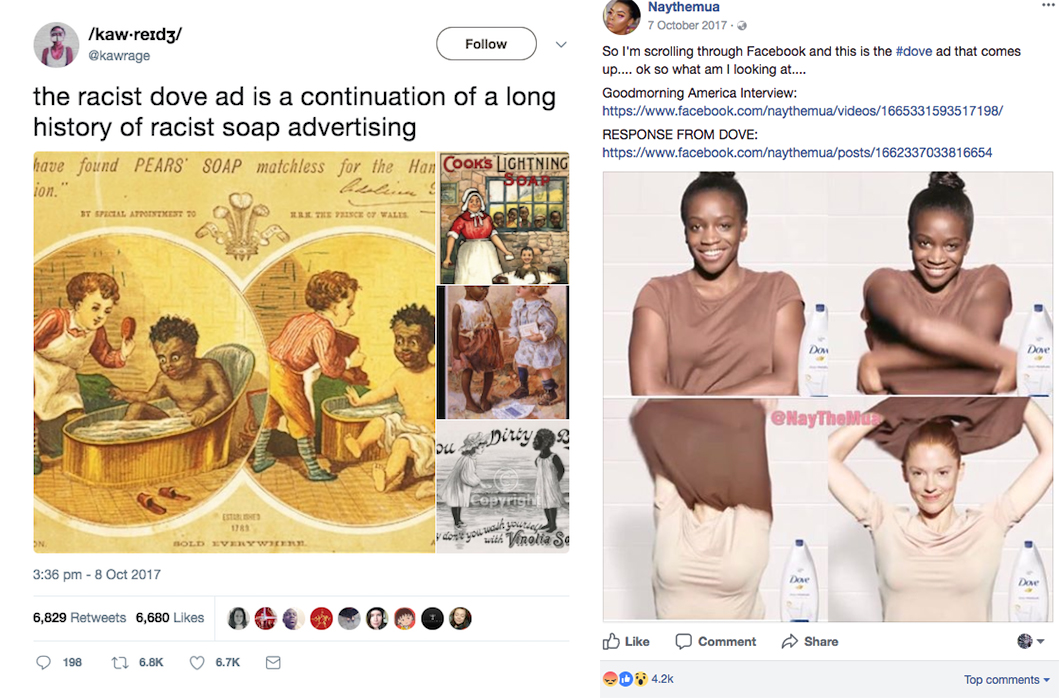
While Dove immediately apologised and took down the Facebook ad, the incident left many wondering how the GIF could have made it through the many reviews that companies perform before approving any public campaign. There’s no denying the connection to the racist rhetoric that dominated the 19th and early 20th century.
Internet users and the media had a similar reaction to a Nivea deodorant ad released last April to target the Middle Eastern audience. The campaign, which read “White is purity”, was taken by some white supremacist groups as the brand’s public support for their racist cause.
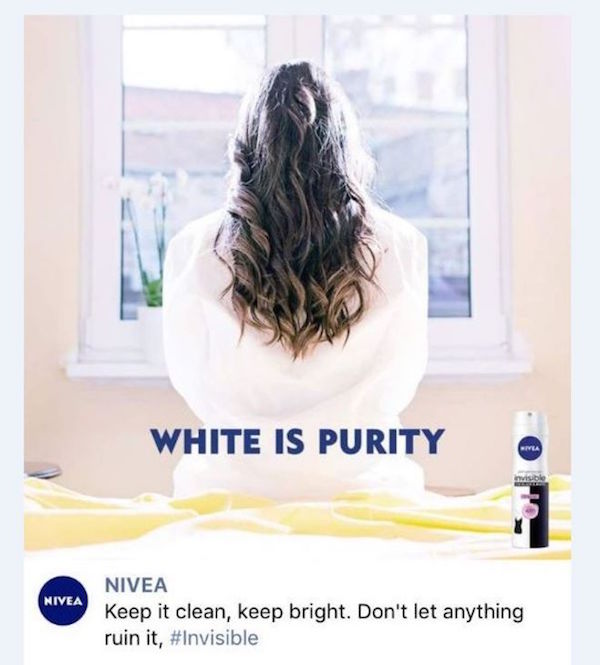
Once again, the personal care company’s representative publicly apologised and took down the campaign following a “standard” procedure that seems to cyclically repeat itself every time accidents like this happen. As advertising acts almost as a mirror of society and is intrinsically connected to cultural developments, it’s not surprising that the media – and social media – are hitting back and this reflects the issues, which are polarising global discourse at this very moment.
While the parents of the little model wearing the infamous hoodie don’t see the ad as offensive or racist – like other public figures, writers and social media users – it’s safe to say that the majority of societal observers see the controversy embedded in a a form of “Negligence that results in ‘accidental’ racism that can be just as insidious as out-and-out bad faith,” as Edward Adoo put it in British newspaper The Independent.



